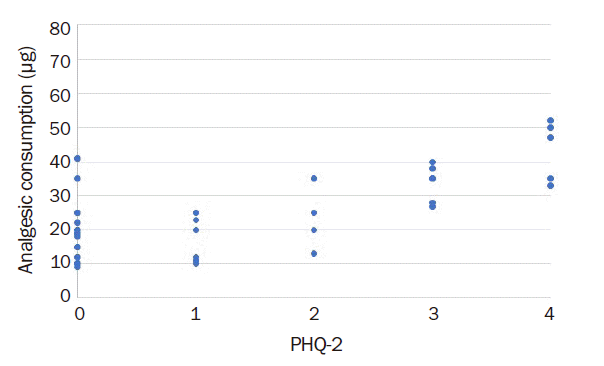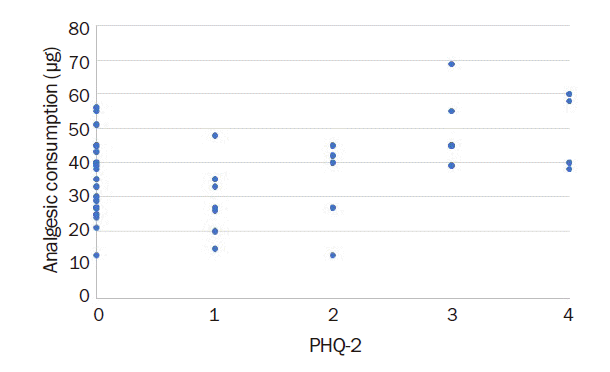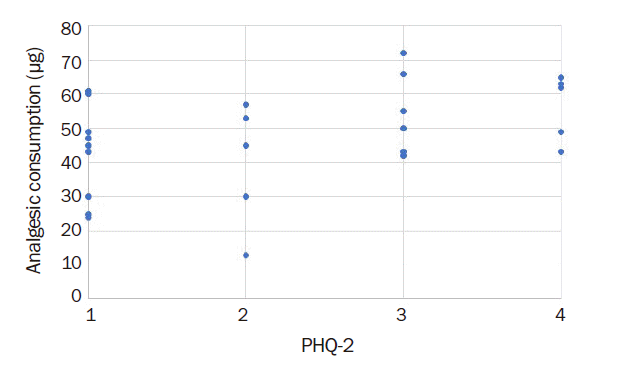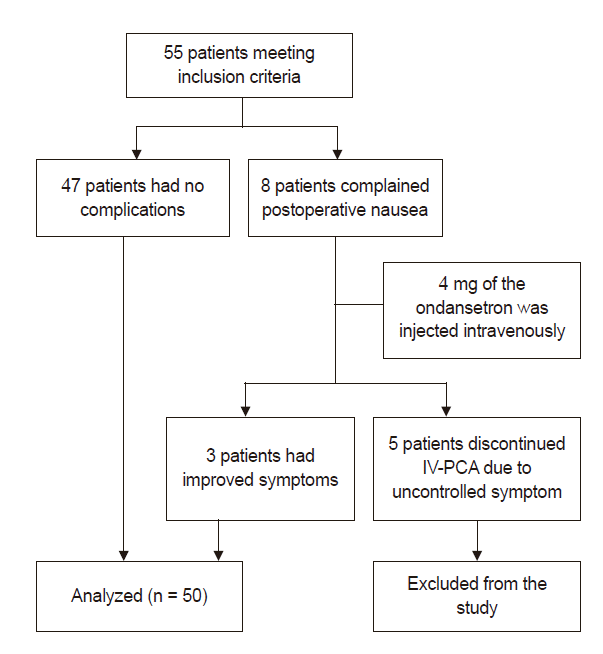1. Kiecolt-Glaser JK, Page GG, Marucha PT, MacCallum RC, Glaser R. Psychological influences on surgical recovery. Perspectives from psychoneuroimmunology. Am Psychol. 1998; 53:1209–18.
2. Derbyshire DR, Smith G. Sympathoadrenal responses to anaesthesia and surgery. Br J Anaesth. 1984; 56:725–39.
3. Kehlet H, Holte K. Effect of postoperative analgesia on surgical outcome. Br J Anaesth. 2001; 87:62–72.
4. Ip HYV, Abrishami A, Peng PW, Wong J, Chung F. Predictors of postoperative pain and analgesic consumption: a qualitative systematic review. Anesthesiology. 2009; 111:657–77.
5. Vaughn F, Wichowski H, Bosworth G. Does preoperative anxiety level predict postoperative pain? AORN J. 2007; 85:589–604.
6. Ahn J. Depression, suicide, and Korean society. J Korean Med Assoc. 2012; 55:320–1.
7. Spitzer RL, Kroenke K, Williams JBW; Patient Health Questionnaire Primary Care Group. Validation and utility of a self-report version of PRIME-MD: the PHQ primary care study. JAMA. 1999; 282:1737–44.
8. Radloff LS. The CES-D scale: a self-report depression scale for research in the general population. Appl Psychol Meas. 1977; 1:385–401.
9. Beck AT, Guth D, Steer RA, Ball R. Screening for major depression disorders in medical inpatients with the Beck Depression Inventory for Primary Care. Behav Res Ther. 1997; 35:785–91.
10. Yesavage JA, Brink TL, Rose TL, Lum O, Huang V, Adey M, et al. Development and validation of a geriatric depression screening scale: a preliminary report. J Psychiatr Res. 1982; 17:37–49.
11. Gerber PD, Barrett J, Barrett J, Manheimer E, Whiting R, Smith R. Recognition of depression by internists in primary care: a comparison of internist and "gold standard" psychiatric assessments. J Gen Intern Med. 1989; 4:7–13.
12. Susman JL, Crabtree BF, Essink G. Depression in rural family practice: easy to recognize, difficult to diagnose. Arch Fam Med. 1995; 4:427–31.
13. Tuck AN, Scribani MB, Grainger SD, Johns CA, Knight RQ. The 9-Item Patient Health Questionnaire (PHQ-9): an aid to assessment of patient-reported functional outcomes after spinal surgery. Spine J. 2018; 18:1398–405.
14. De Cosmo G, Congedo E, Lai C, Primieri P, Dottarelli A, Aceto P. Preoperative psychologic and demographic predictors of pain perception and tramadol consumption using intravenous patient-controlled analgesia. Clin J Pain. 2008; 24:399–405.
15. Shin JH, Kim HC, Jung CH, Kim JB, Jung SW, Cho HJ, et al. The Standardization of the Korean Version of the Patient Health Questionnaire-2. J Korean Neuropsychiatr Assoc. 2013; 52:115–21.
16. Schade V, Semmer N, Main CJ, Hora J, Boos N. The impact of clinical, morphological, psychosocial and work-related factors on the outcome of lumbar discectomy. Pain. 1999; 80:239–49.
17. Oztekin HH, Boya H, Ozcan O, Zeren B, Pinar P. Pain and affective distress before and after ACL surgery: a comparison of amateur and professional male soccer players in the early postoperative period. Knee. 2008; 15:368–72.
18. Kavakci Ö, Altuntas EE, Müderris S, Kugu N. Effects of the preoperative anxiety and depression on the postoperative pain in ear, nose and throat surgery. Indian J Otol. 2012; 18:82–7.
19. Kang DH, Kim DS, Kim JD, Kim JW. A comparison of fentanyl and morphine for patient controlled analgesia after laparoscopic cholecystectomy. Anesth Pain Med. 2013; 8:21–5.
20. Brander VA, Stulberg SD, Adams AD, Harden RN, Bruehl S, Stanos SP, et al. Predicting total knee replacement pain: a prospective, observational study. Clin Orthop Relat Res. 2003; (416):27–36.
21. Marazziti D, Castrogiovanni P, Rossi A, Rosa C, Ghione S, Di Muro A, et al. Pain threshold is reduced in depression. Int J Neuropsychopharmacol. 1998; 1:45–8.







 PDF
PDF Citation
Citation Print
Print




 XML Download
XML Download